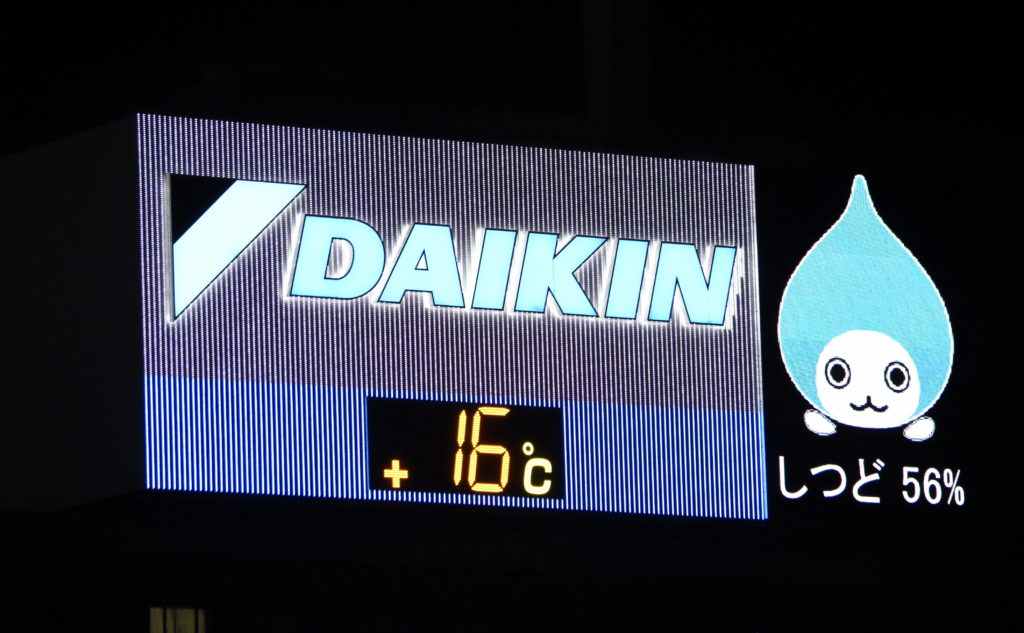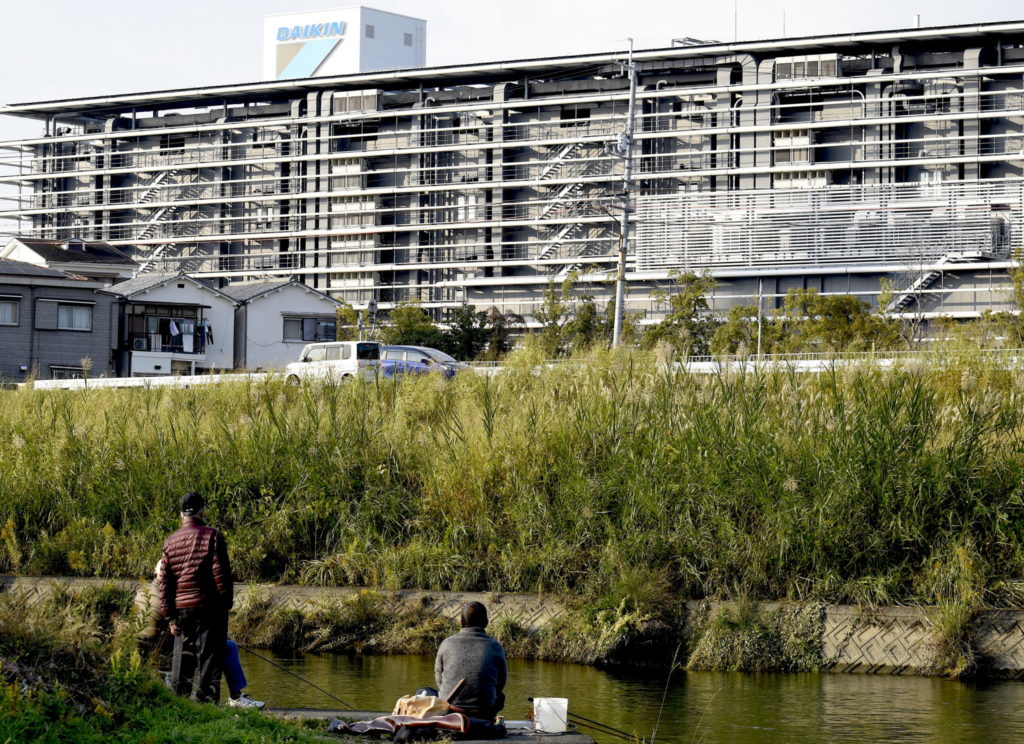Those Who Still Let Daikin Pass (29)
2023.03.28 17:41 Nanami Nakagawa
The series “Polluted with PFOA” began on November 11, 2021 with one newsflash. PFOA, a toxic substance that the government banned the manufacture and import in October of 2021, was detected in high concentrations in the blood of all nine residents of Settsu City, Osaka, who were tested.
Since then, high levels of exposure have been found every time citizens are tested.
The source of the pollution is Daikin Industries. The Daikin Yodogawa Plant in the city has manufactured and used PFOA for about 50 years since the late 1960s. Tansa obtained confidential documents that revealed that Daikin had discharged large amounts of PFOA outside its premises.
In response to this situation, in April 2022, Settsu citizens collected 1,565 signatures and submitted a request to the mayor for a PFOA investigation and countermeasures. The number of signatures continues to grow and now stands at 1,710. This number of signatures is enough to request a referendum on the pros and cons of the measures.
However, Daikin continues to evade responsibility as a source of pollution. Neither compensation to residents nor decontamination has been carried out.
Why is pollution repeated in the era of 2023, when an international company such as Daikin should be taking action on environmental conservation? In the past year and a half, I have faced the “sidelines” of local governments and the major media companies, which are originally on the side of the citizens.

Signboard of Daikin Industries in front of Shin-Osaka Station
Daikin to be at lost
Daikin is desperately trying to run away.
Satoshi Komatsu, senior manager of the Chemicals Division, who has jurisdiction over PFOA, was at a loss for an answer during the interview and said, “Is PFOA dangerous?” President Masanori Togawa pretended not to hear me and said, “I don’t know what you’re saying” when I ran into him while he was giving a lecture in Nagoya, and walked away. Chairman Noriyuki Inoue, who has reigned over Daikin for nearly 30 years, promised that he would be interviewed at the head office when I went to his house without an appointment. However, he reversed his previous words and declined the interview on the same day.
The biggest blow to Daikin was the Daikin’s internal document I obtained.
In the document, the amount of PFOA discharged outside the Yodogawa Plant premises during the period when Daikin was manufacturing PFOA was written. Akio Koizumi, a professor emeritus at Kyoto University and a pioneer of PFOA research in Japan, was shocked at the numbers and said, “It’s impossible not to have an impact on the surrounding area.” It was conclusive proof that Daikin was the source of the pollution.
Until now, Daikin has kept the amount of PFOA discharged outside its premises a secret. This is because if it is made public, Daikin must admit that it is the cause of the contamination. Daikin has previously argued that the Yodogawa Plant may be the source of the pollution.
However, Daikin’s demeanor changed when the internal document was presented to three senior executives, including Yoshiyuki Hiraga, executive officer of Daikin’s Chemicals Division. Based on the “Environmental Conservation Agreement” Daikin signed with the city of Settsu in 1977, it was prepared to negotiate compensation for the citizens who had suffered the damage. He made it clear that Daikin would start negotiations if the city of Settsu made an offer. When I heard these words, I thought, “This may open the way for resolution.”

An unscheduled interview with Daikin Industries Chairman Noriyuki Inoue. Photo taken on June 2, 2022 by Makoto Watanabe.
A local government that prioritizes Daikin over citizens
However, Settsu City threw away the chance of compensating the residents.
Mayor Kazumasa Moriyama has vowed not to make any appeals to Daikin under the agreement. The reason is “because there is no health hazard either now or in the future.”
It is clear from studies around the world that high-concentration exposure to PFOA causes health hazards. An independent scientific research council in the United States has identified the health effects of PFOA in the world’s largest epidemiological study of 70,000 people. The European Environment Agency has published the health effects caused by PFOA.
How could Moriyama say that there would be no health problems for Settsu citizens? Even if I asked that point, Moriyama couldn’t answer. Moriyama finally spoke.
“Daikin would be in trouble, if we keep doing this forever.”
Despite being a citizen-elected mayor, Moriyama seems to have abandoned his duties. I can’t help but think that he is working for Daikin, not for the citizens.
Osaka Prefecture, which is in a position to supervise and give guidance to Daikin, is not much different from Settsu City.
15 years ago, the prefectural government asked Daikin about the amount of PFOA emitted outside the premises of Yodogawa Plant, but Daikin refused on the grounds of business secrets. Osaka Prefecture immediately withdrew.
Even now, Osaka Prefecture’s indecisive attitude towards Daikin has not changed.
At the Diet in April 2022, then-Environment Minister Tsuyoshi Yamaguchi mentioned that it was the prefectural government’s role to ask Daikin about the amount of PFOA emitted outside the premises of Yodogawa Plant. However, the prefectural government has not asked Daikin yet.
There were other things that the prefecture should have confirmed with Daikin. I asked the prefectural business guidance section several times for confirmation, but they never responded. I sent a letter of protest to Governor Hirofumi Yoshimura, but nothing has changed.

Daikin Industries’ Yodogawa Plant. Photo taken on November 15, 2021 by Arakawa Tomohiro
Whose side is major media on?
What about the media? Citizens launched a signature campaign and the City Council unanimously passed a petition to the state. It was also debated in parliament.
But the newspapers and TV didn’t report it.
I was particularly surprised by the press club in Settsu City. The press club has a press room in the city hall. I have visited the press room many times, but I have never seen a reporter there. Nor have I seen a reporter attend the City Council session where PFOA is being deliberated.
When I visited the City Council to report, a man with a high concentration of PFOA in his blood was also present and said to me:
“I tried to sit in the middle of the audience seats, but I couldn’t because it was for reporters only.
Media reporters, on the other hand, seem to be interested in the issue of PFOA contamination.
A Yomiuri Shimbun reporter contacted Koizumi of Kyoto University, who appears in my article. When I hinted at obtaining the internal documents in an article, the reporter wanted to know if Koizumi knew what the scoop Tansa had was.
A reporter from Kansai Television directly sent me an email requesting the introduction of a citizen who was highly exposed to PFOA. With consent, I provided his contact information. We also had a video call, and it was decided that Tansa would provide them with the documents that we obtained from the information disclosure. However, it just faded out.
A Nippon Television reporter asked Tansa to confirm an article about the movie “Dark Waters” about PFOA pollution in the United States. It made me wonder why they didn’t check it themselves, but I accepted on the condition that they put Tansa’s credit on it. However, the actual article was not credited. In addition to breaking a promise, the numbers in the article were incorrect. NTV is still disseminating information that is not true.
For whom do newspaper and television reporters work? Isn’t it the mission of journalists to unite in solidarity to confront the authorities and stop or prevent damage? Why do they sneak around, abandon their job, and lie?
If a bigger media reported, the situation might change. It’s a privilege wasted.
If there is a reporter who wishes to cover PFOA contamination in Settsu in depth and report it properly, I will share the results of the coverage so far. It is important for journalists to be in solidarity. I am ready to hear from you.
Series move to Part 2
In the stalemate of the situation, it is the government that holds the key. Japan experienced a lot of pollution during the period of high economic growth, including the four major pollutions such as Minamata disease. Although the government must have taken measures to prevent a recurrence, I believe it is responsible for the fact that pollution such as PFOA pollution is still occurring.
It was the government who banned the manufacture and import of PFOA in 2021 due to its danger to the human body. High concentrations of the substance have been detected in the blood of residents living near Daikin’s factories. The country should seriously deal with this problem.
However, the Ministry of the Environment, the Ministry of Economy, Trade and Industry, the Ministry of Agriculture and Fisheries, and other ministries and agencies related to this issue remain on the sidelines.
Why stand by? How could they remain as bystanders? I am currently conducting an investigation including matters on the national government and ministries. The results of disclosure of Information requests are slowly coming together.
Part 1 ends here. Part 2 begins with further research, clarifying the structure of a country that repeatedly causes pollution.
To be continued to Part 2.
(Originally published in Japanese on October 20, 2022. Translation by Mana Shibata.)
Polluted with PFOA: All articles
 Newsletter signup
Newsletter signup